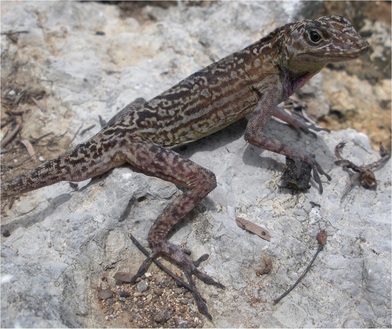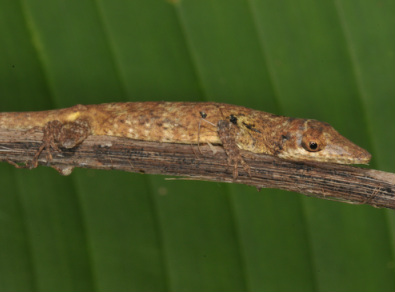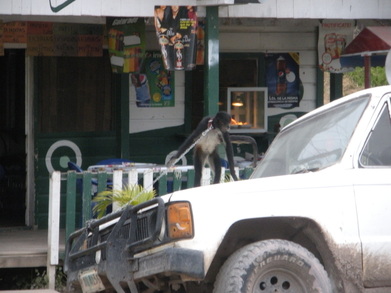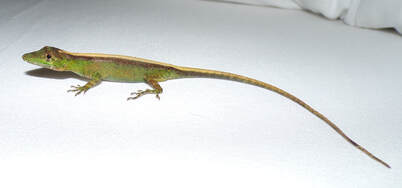
Colombia 2024
Anolis calimae has comically short limbs.
Anolis calimae has comically short limbs.
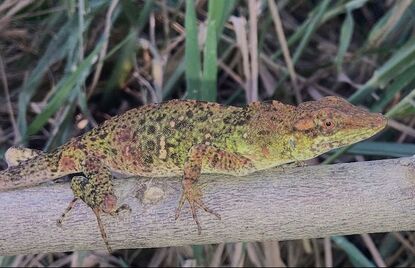
Colombia 2023
Finally got Anolis mirus.
Finally got Anolis mirus.
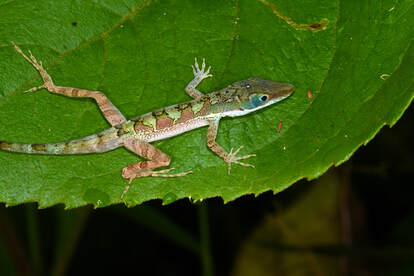
Dominican Republic 2023
A short and peripatetic trip featuring 19 species of anole, including Anolis bahorucoensis (left, photo by T Kennedy), with iNaturalist anole leader Tom Kennedy.
A short and peripatetic trip featuring 19 species of anole, including Anolis bahorucoensis (left, photo by T Kennedy), with iNaturalist anole leader Tom Kennedy.
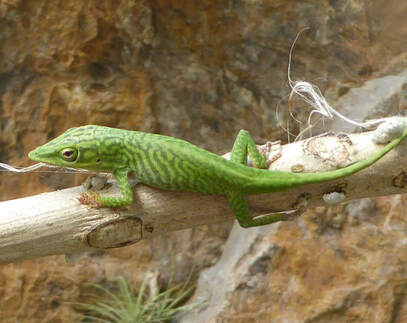
Cuba 2023
Three nights and 12 anole species at Soroa, missing on Anolis loysianus but adding A. ophiolepis and A. viridulus (photo, left) to the standard Soroa anole complement of Rodriguez-Schettino et al. (Breviora 2010).
Three nights and 12 anole species at Soroa, missing on Anolis loysianus but adding A. ophiolepis and A. viridulus (photo, left) to the standard Soroa anole complement of Rodriguez-Schettino et al. (Breviora 2010).
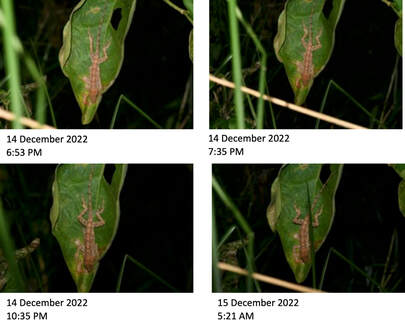
Puerto Rico 2022
With photographer/naturalist Tom Kennedy. Turns out anoles choose a sleeping perch at sundown and stay there until sunup (Who knew?!; photos by T Kennedy).
With photographer/naturalist Tom Kennedy. Turns out anoles choose a sleeping perch at sundown and stay there until sunup (Who knew?!; photos by T Kennedy).
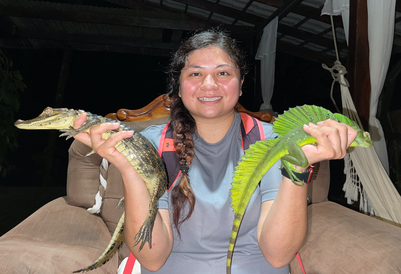
Costa Rica 2022.2
UNM Herpetology class student Ashley Morales with some of the herp megafauana caught on the trip.
UNM Herpetology class student Ashley Morales with some of the herp megafauana caught on the trip.
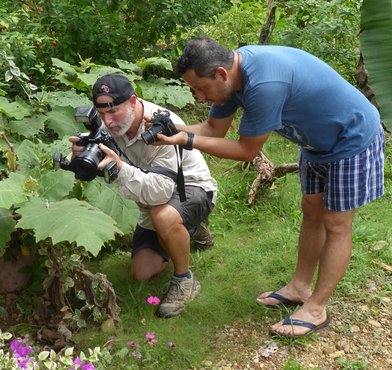
Colombia 2022
Tom Kennedy and Rafael Moreno-Arias photograph Anolis triumphalis in San Cipriano.
Tom Kennedy and Rafael Moreno-Arias photograph Anolis triumphalis in San Cipriano.
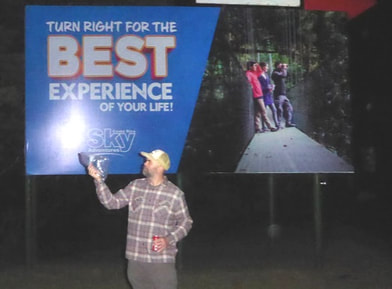
Costa Rica 2022.1
Finding Anolis monteverde may have been the best experience of UNM graduate student Chris Anderson's life.
Finding Anolis monteverde may have been the best experience of UNM graduate student Chris Anderson's life.
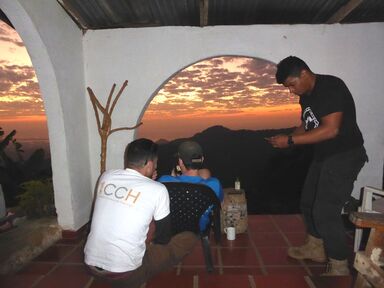
Colombia 2020
Anole researchers contemplate the validity of Anolis umbrivagus and A. paravertebralis while enjoying a San Lorenzo sunset (L to R: Beto Rueda Solano, Joseph Barnett, Jose Luis Perez Gonzalez).
Anole researchers contemplate the validity of Anolis umbrivagus and A. paravertebralis while enjoying a San Lorenzo sunset (L to R: Beto Rueda Solano, Joseph Barnett, Jose Luis Perez Gonzalez).
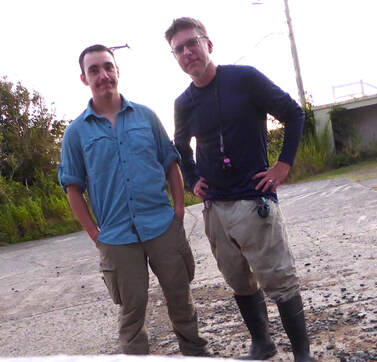
Virgin Islands 2019
Joseph Barnett (L) and Poe (R) at the Sage Mountain trailhead, the morning after a night spent searching for Anolis roosevelti. Note the absence of Anolis roosevelti.
Joseph Barnett (L) and Poe (R) at the Sage Mountain trailhead, the morning after a night spent searching for Anolis roosevelti. Note the absence of Anolis roosevelti.
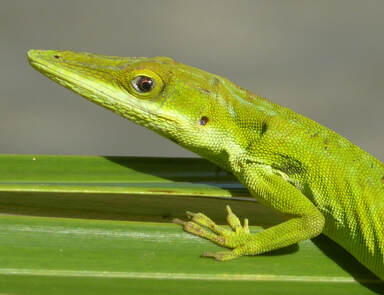
Cayman Islands 2018
Anolis maynardi (left), A. conspersus, A. sagrei, A. luteosignifer, A. carolinensis.
Anolis maynardi (left), A. conspersus, A. sagrei, A. luteosignifer, A. carolinensis.
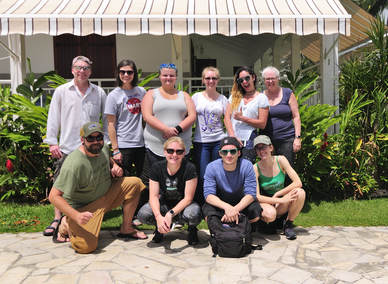
Guadeloupe 2018
UNM Herpetology class trip, with bonus herping around Miami.
UNM Herpetology class trip, with bonus herping around Miami.
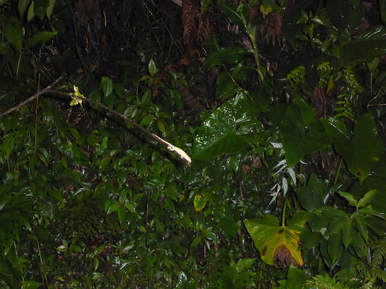
Peru 2017
Amazonia (Thanks, Devon Graham and Project Amazonas) and eastern Andes (photo: Anolis peruensis).
Amazonia (Thanks, Devon Graham and Project Amazonas) and eastern Andes (photo: Anolis peruensis).
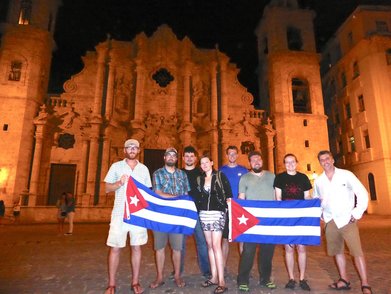
Cuba 2017
UNM Herpetology class trip to Soroa and Cabo San Antonio.
UNM Herpetology class trip to Soroa and Cabo San Antonio.
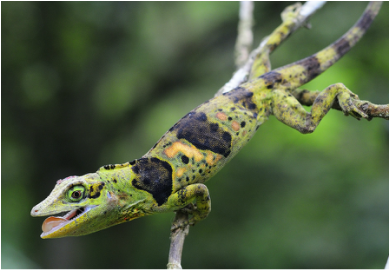
Ecuador 2016
We concentrated in southern Ecuador, with Fernando Ayala and Omar Torres. (photo: C Anderson)
We concentrated in southern Ecuador, with Fernando Ayala and Omar Torres. (photo: C Anderson)
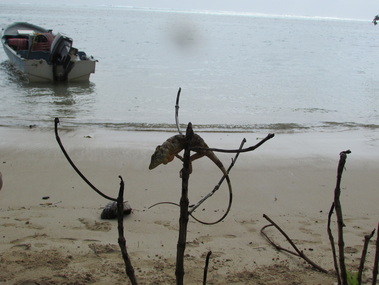
Panama 2015
UNM Herpetology class trip.
UNM Herpetology class trip.
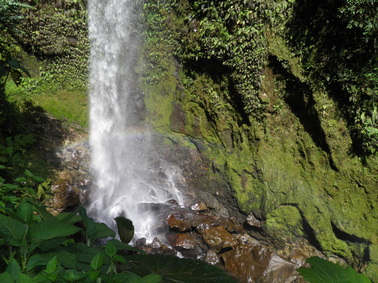
Panama 2014
Hidden Waterfalls Hike, Boquete, Panama.
Hidden Waterfalls Hike, Boquete, Panama.
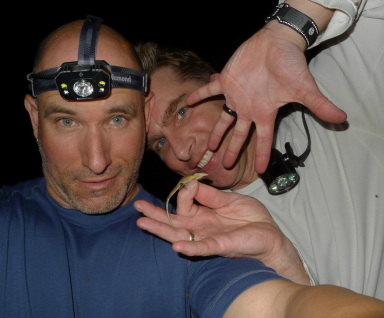
Virgin Islands 2014
Kennedy and Poe achieve "the Ocho": all eight species of anole in El Yunque, Puerto Rico, collected in a single evening. The lizard in hand is Anolis pulchellus, the eighth species caught.
Kennedy and Poe achieve "the Ocho": all eight species of anole in El Yunque, Puerto Rico, collected in a single evening. The lizard in hand is Anolis pulchellus, the eighth species caught.
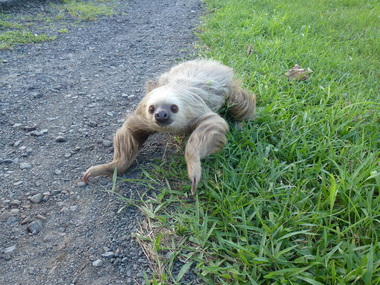
Panama 2013.2
Attack sloth along Pan American highway. Fewer people are killed annually by sloths than by any other large tropical mammal.
Attack sloth along Pan American highway. Fewer people are killed annually by sloths than by any other large tropical mammal.
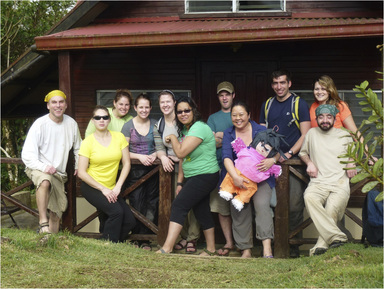
Panama 2013.1
UNM Herpetology class spring break trip, Parque El Cope (P. N. Omar Torrijos), Panama.
UNM Herpetology class spring break trip, Parque El Cope (P. N. Omar Torrijos), Panama.
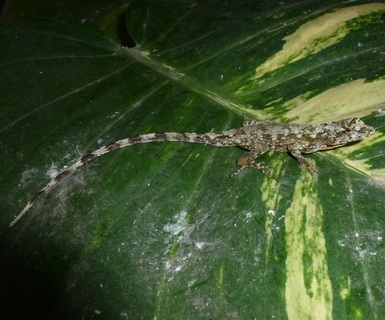
Colombia 2013
We caught Anolis sulcifrons at Ibague, some with ibague-like headscales, so we are pretty sure Anolis ibague = Anolis sulcifrons.
We caught Anolis sulcifrons at Ibague, some with ibague-like headscales, so we are pretty sure Anolis ibague = Anolis sulcifrons.
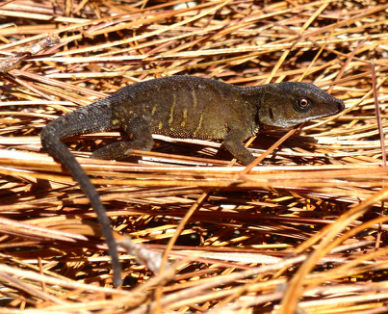
Mexico 2012
Anolis uniformis is found near the ground.
Anolis uniformis is found near the ground.
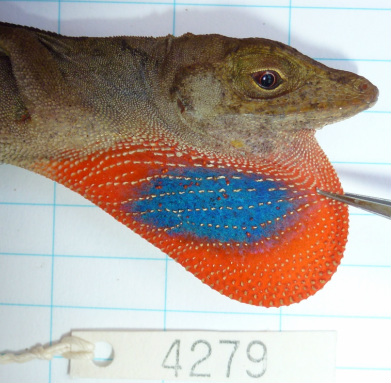
Honduras 2012
UNM herpetology class trip, featuring Anolis johnmeyeri.
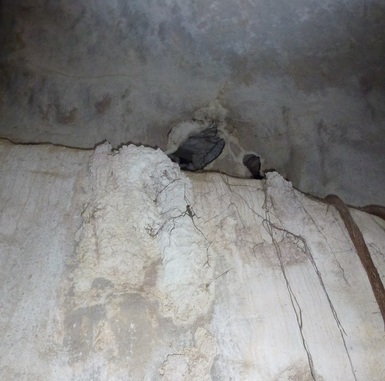
Mexico 2011-12
Anolis alvarezdeltoroi sleeps inside caves.
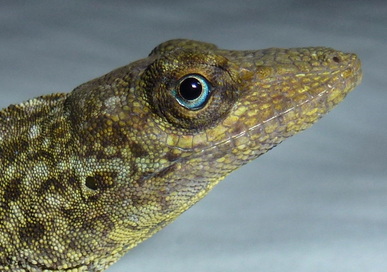
Honduras and Guatemala 2010
Anolis cristifer is one of a few anole species with blue eyes.
Anolis cristifer is one of a few anole species with blue eyes.
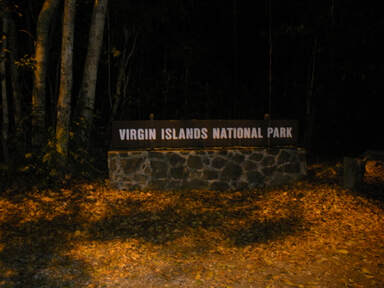
Virgin Islands 2010
Note the absence of Anolis roosevelti in this photo.
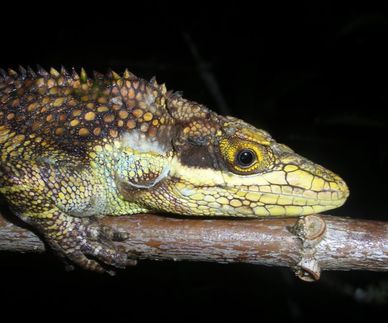
Ecuador and Colombia 2009-2010
Anolis vanzolinii is a "giant" phenacosaur.
Anolis vanzolinii is a "giant" phenacosaur.
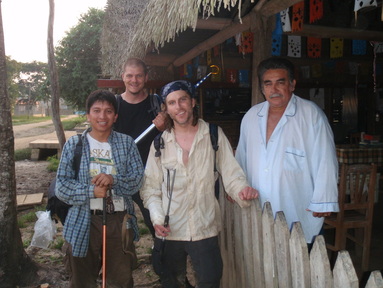
Bolivia 2009
We found Anolis fuscoauratus at its type locality in Bolivia.
(L to R: Alvaro Aguilar, Eric Schaad, S Poe, Jefe de Camiaco)
We found Anolis fuscoauratus at its type locality in Bolivia.
(L to R: Alvaro Aguilar, Eric Schaad, S Poe, Jefe de Camiaco)
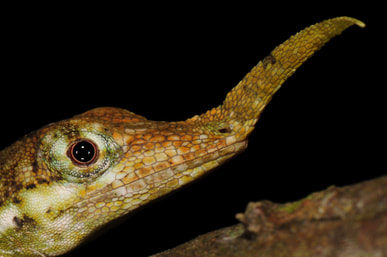
Ecuador 2009
Yánez-Muñoz' group rediscovered Anolis proboscis in 2007. Unaware of their rediscovery, we found several individuals of the species during this 2009 trip and wrote a paper about it that was published years later (Poe et al. 2012 Breviora). More recent "rediscoveries" of this species were still making news in 2013 (Wikipedia). (photo T Kennedy)
Yánez-Muñoz' group rediscovered Anolis proboscis in 2007. Unaware of their rediscovery, we found several individuals of the species during this 2009 trip and wrote a paper about it that was published years later (Poe et al. 2012 Breviora). More recent "rediscoveries" of this species were still making news in 2013 (Wikipedia). (photo T Kennedy)
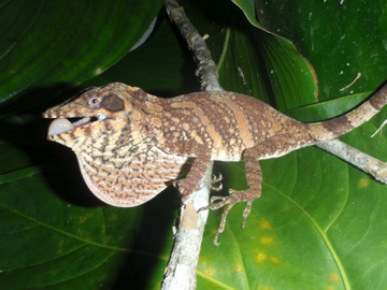
Costa Rica 2009
We described this guy from Las Cruces Biological Station as Anolis savagei in 2017, honoring the great herpetologist Jay Savage. Jay and James Talbot had recognized this form as distinct in 1978.
We described this guy from Las Cruces Biological Station as Anolis savagei in 2017, honoring the great herpetologist Jay Savage. Jay and James Talbot had recognized this form as distinct in 1978.
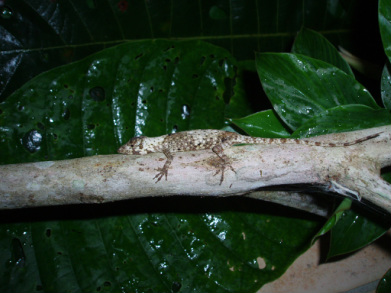
Costa Rica 2007
Anolis fungosus is a cryptic species found in Costa Rica and Panama.
Anolis fungosus is a cryptic species found in Costa Rica and Panama.
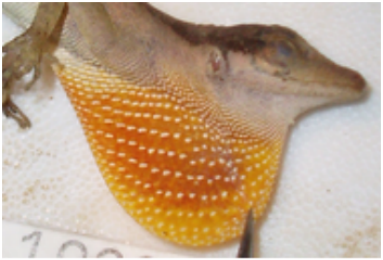
Panama 2007
Anolis gaigei is common on the Azuero peninsula.
Anolis gaigei is common on the Azuero peninsula.
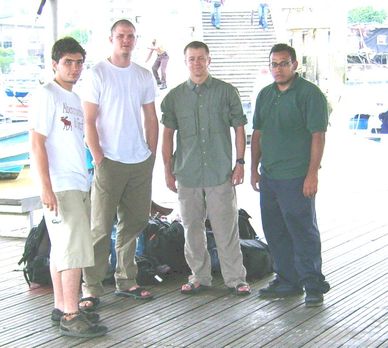
Panama and Colombia 2006-2007
Hoodlums at the dock in Buenaventura, Colombia.
(L to R: Andres Quintero-Angel, Eric Schaad, Erik Hulebak, Julian Velasco)
Hoodlums at the dock in Buenaventura, Colombia.
(L to R: Andres Quintero-Angel, Eric Schaad, Erik Hulebak, Julian Velasco)
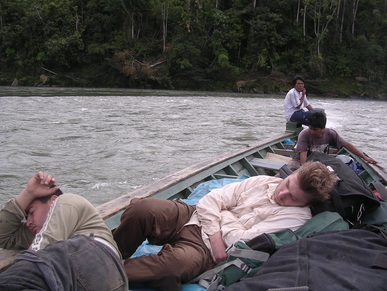
Peru 2005.2
Hunt Anolis at night => sleep during the day. (Foreground L: Christian Yañez-Miranda; R: S Poe; Photo: J Hollis)
Hunt Anolis at night => sleep during the day. (Foreground L: Christian Yañez-Miranda; R: S Poe; Photo: J Hollis)
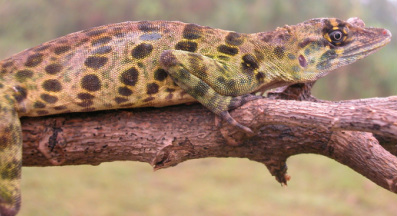
Panama 2005.2
Anolis frenatus is common in Parque El Cope.
Anolis frenatus is common in Parque El Cope.
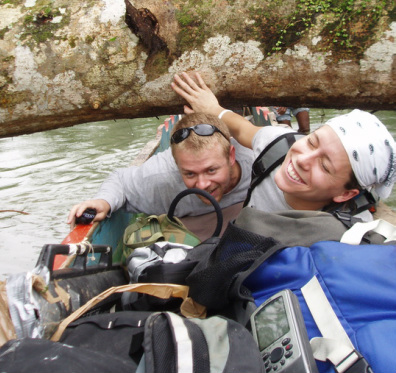
Panama 2005.1
UNM undergrads Heather MacInnes and Erik Hulebak on the way to the Darien.
UNM undergrads Heather MacInnes and Erik Hulebak on the way to the Darien.
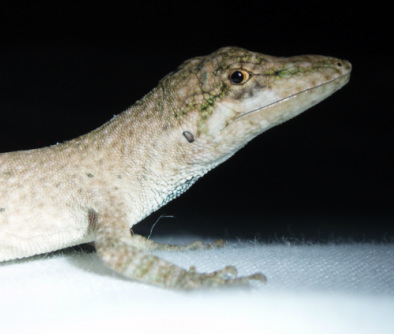
Peru 2005.1
Anolis peruensis was one of at least four new species of Anolis we found in a few nights work west of Moyobamba, Peru (Poe and Yañez-Miranda 2007, 2008; Poe et al. 2008; Poe et al. 2015).
Anolis peruensis was one of at least four new species of Anolis we found in a few nights work west of Moyobamba, Peru (Poe and Yañez-Miranda 2007, 2008; Poe et al. 2008; Poe et al. 2015).
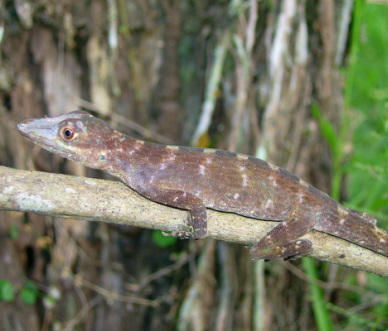
Peru 2004-2005
Like many green anoles, Anolis punctatus turns brown when stressed.
Like many green anoles, Anolis punctatus turns brown when stressed.
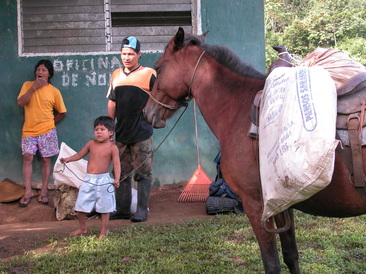
Panama 2004.2
I visited Serrania de Maje, including this Embera village, and Pipeline Road. Gracias, Andrew Crawford.
I visited Serrania de Maje, including this Embera village, and Pipeline Road. Gracias, Andrew Crawford.
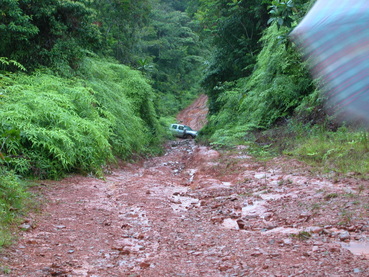
Panama 2004.1
Driving down the El Llano-Carti road seemed like a good idea at the time. The road was paved in 2011.
Driving down the El Llano-Carti road seemed like a good idea at the time. The road was paved in 2011.
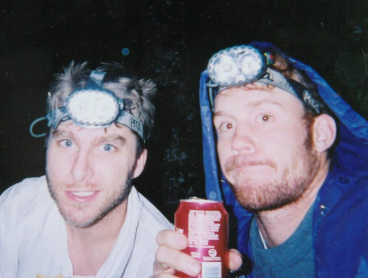
Panama 2003
On my first trip to Panama, there were many anoles I couldn't identify. This failure was mainly due to my unfamiliarity with the local fauna, but there were mitigating circumstances: 14 species of Anolis have been described from Panama since 2003, with more on the way. (Caleb Hickman, R; S Poe, L)
On my first trip to Panama, there were many anoles I couldn't identify. This failure was mainly due to my unfamiliarity with the local fauna, but there were mitigating circumstances: 14 species of Anolis have been described from Panama since 2003, with more on the way. (Caleb Hickman, R; S Poe, L)
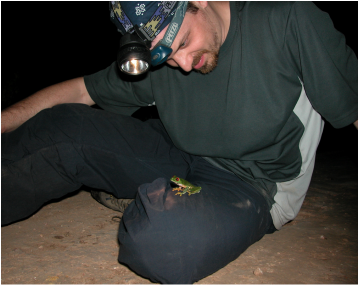
Belize 2003
I went on the UNM Tropical Biology trip to the coast, then did bonus herping inland in the Maya Mountains. (philosopher Gideon Yaffe with Agalychnis)
I went on the UNM Tropical Biology trip to the coast, then did bonus herping inland in the Maya Mountains. (philosopher Gideon Yaffe with Agalychnis)
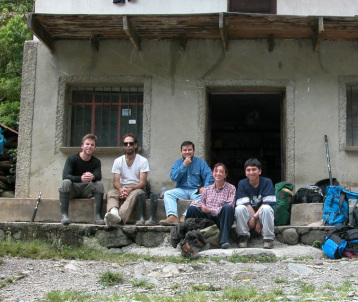
Bolivia 2003
A joint mammal-herp trip to Estacion Tunquini. Jorge Salazar (middle) is my favorite Bolivian, but Alvaro Aguilar (right) is a close second.
A joint mammal-herp trip to Estacion Tunquini. Jorge Salazar (middle) is my favorite Bolivian, but Alvaro Aguilar (right) is a close second.
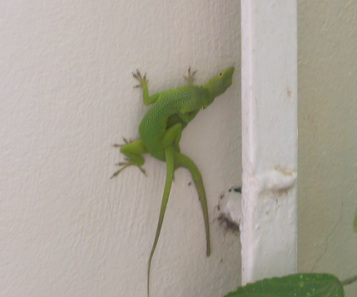
Jamaica 2003
Trash anoles like these Anolis grahami will mate on hotel walls.
Trash anoles like these Anolis grahami will mate on hotel walls.

Pre-UNM field work in the Dominican Republic (1995, 2001), Cuba (1999, 2001, 2002), Puerto Rico (2001, 2002)
